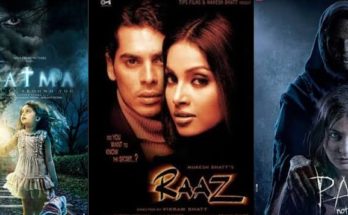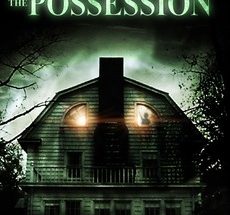There’s a sense of familiarity in a movie like Insidious. Horror movies these days are a dime a dozen, but Insidious’s familiarity comes from a deeper place; it comes from true classics like Poltergeist (1982) or even Paranormal Activity (2007), whose producers helped get this film done. Those films work because they have a handle on their atmosphere, something every good horror film has. If you can’t control the tone of your film, how can you hope to control the tone of your audience? The answer to that seems easy – that’s why films like John Carpenter’s The Fog (1980) get remade, and films like Boogeyman (2005) are conceived every day. Tell some audiences to be afraid, and naturally they will be. An example of making your audience afraid, rather than simply suggesting their fear, is a Japanese film called Ju-on (2002), later remade in 2004 as The Grudge to, arguably, the same effect. An even better example is Alfred Hitchcock’s Psycho (1960).
Screenwriter Leigh Whannell is similar to a magician pulling a rabbit out of his hat; the effect comes from left field and the audience was probably told not to expect a rabbit in the first place. I remember watching the first Saw film (2004) and being blind-sided by the ending. After rewatching the film, I remember being blind-sided by the conditions under which the ending works. Twist endings, by nature, aren’t organic, but they can feel that way even if they are dependent on the rest of the film and a bit of smoke and mirrors. There is a twist here that some might see coming. The trickiest part to pulling off a twist ending is to get the audience too wrapped up in what’s going on to even remember that there’s an end. Good horror films with big finishes can do that; most of those get ruined with a sequel or a remake.
Where Insidious falls apart, however, isn’t at the end, but in the indecisive tone. It’s hard to tell what the film is going for. There are parts that feel like a comedy trapped in a horror film, and then there are parts that feel the other way around. We could call it a horror-comedy, but I don’t think that’s accurate. The scary moments are truly frightening (one scene in the end has a nauseating sense of claustrophobia) and there are truly funny moments (Whannell and Angus Sampson as “ghostbusters” is a joy). However, when the two are mixed, there’s no telling what the team is intending; unfortunately, that impedes some crucial moments. The placement of Tiny Tim’s “Tiptoe Through the Tulips” muddles the effect a bit; but, on the other hand, Tiny Tim himself is… eerie. So I may be shooting in the dark. It may be an intentional choice by director James Wan, and a clue that the film knows it’s having fun with its audience. One of Wan’s previous films, Dead Silence (2007), which concerns possessed ventriloquist dummies, has the same effect – visually striking first half, unhinged second half.
Thankfully, in its most uneven atmospheric moments, Insidious can fall back on the strength and dedication of its performers. Rose Byrne and Patrick Wilson make more than good use of their material as the frightened and maybe cursed parents of a boy trapped in another dimension from a coma. Lin Shaye plays Elise Rainier, a psychic called upon by Wilson’s mother, played by Barbra Hershey. All smart screenplays give the audience a chance to latch on to the character before we have to watch their lives deconstructed. Our film opens with the everyday happenings of a family trying to be happy – the mother is plagued by stress at a young age, the husband wants more time to himself, and the kids are being kids. Dalton (Ty Simpkins), the soon-to-be afflicted child, falls from a ladder in the attic and is knocked unconscious, falling into a coma, or, as Rainier calls it, “The Further.” Not a coma, just personified hell. Doctors can’t help him; only his parents, Josh (Wilson) and Renai (Byrne), can.
The film has an intelligent premise, and is executed quite well despite its inconsistent comedic moments. Wan’s most promising attribute as a director is that he understands he’s making a pop-culture horror film. People are going to see this regardless of reviews or what their friends say, so he almost has license to do as he pleases. Dead Silence did well, as did Death Sentence (2007), and obviously Saw. We can tell he’s attempting to take his career in a more respectable direction, as is Whannell, but that doesn’t mean they should give up what makes them “them” in the process. Looking back on it, I think the most organic thing about Insidious is that delivers exactly what it promises: a familiar story with familiar scares, told in a visually exciting way by a filmmaker still finding his voice. Let’s just hope there won’t be a sequel to ruin what good this film had.



